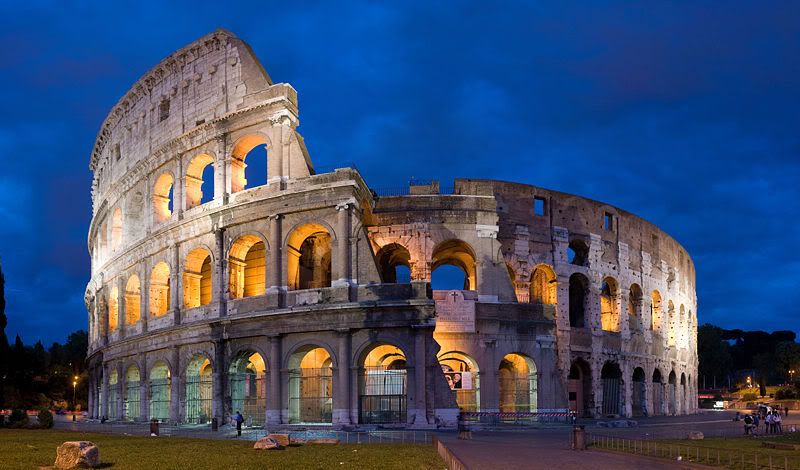
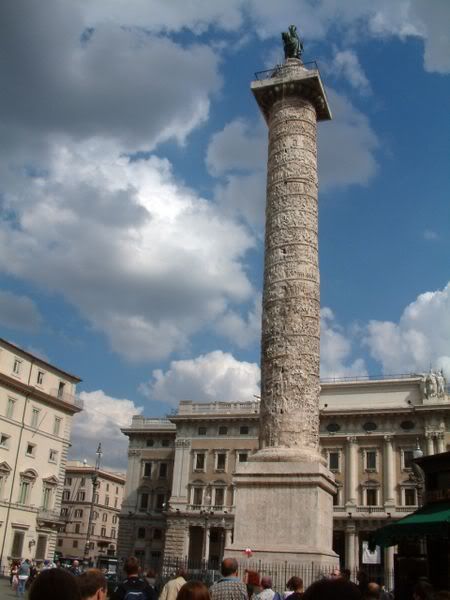
One of the symbols of Rome is the Colosseum (70-80 AD), the largest amphitheatre ever built in the Roman Empire. Originally capable of seating 60,000 spectators, it was used for gladiatorial combat. The list of the very important monuments of ancient Rome includes the Roman Forum, the Domus Aurea, the Pantheon, Trajan's Column, Trajan's Market, the several catacombs area, the Circus Maximus, the Baths of Caracalla, Castel Sant'Angelo, the Mausoleum of Augustus, the Ara Pacis, the Arch of Constantine, the Pyramid of Cestius, and the Bocca della Verità.
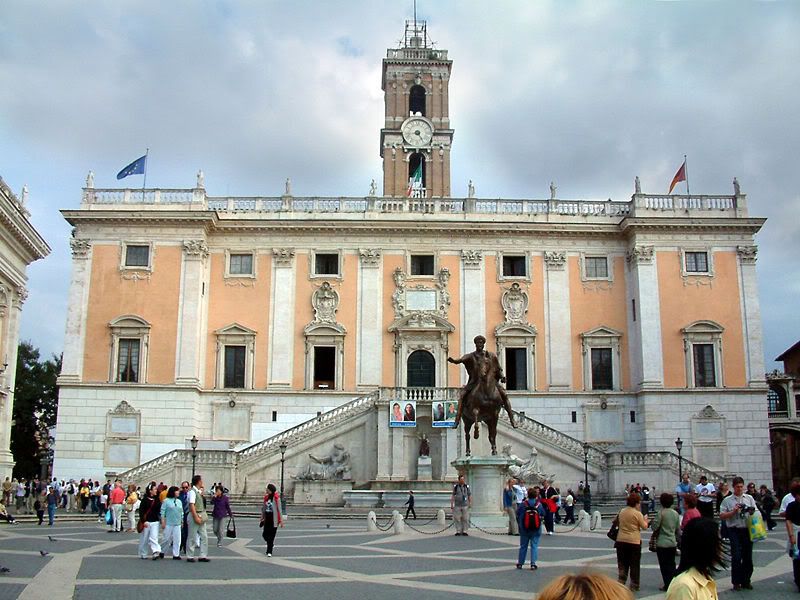
Rome was a major world center of the Renaissance, second only to Florence, and was profoundly affected by the movement. The most impressive masterpiece of Renaissance architecture in Rome is the Piazza del Campidoglio by Michelangelo, along with the Palazzo Senatorio, seat of the city government. During this period, the great aristocratic families of Rome used to build opulent dwellings as the Palazzo del Quirinale (now seat of the President of the Republic), the Palazzo Venezia, the Palazzo Farnese, the Palazzo Barberini, the Palazzo Chigi (now seat of the Prime Minister), the Palazzo Spada, the Palazzo della Cancelleria, and the Villa Farnesina.
Rome is also famous for her huge and majestic squares (often adorned with obelisks), many of which were built in the 17th century. The principal squares are Piazza Navona, Piazza di Spagna, Campo de' Fiori, Piazza Venezia, Piazza Farnese and Piazza della Minerva. One of the most emblematic examples of the baroque art is the Fontana di Trevi by Nicola Salvi. Other notable baroque palaces of 17th century are the Palazzo Madama, now seat of the Italian Senate and the Palazzo Montecitorio, now seat of the Chamber of Deputies of Italy.
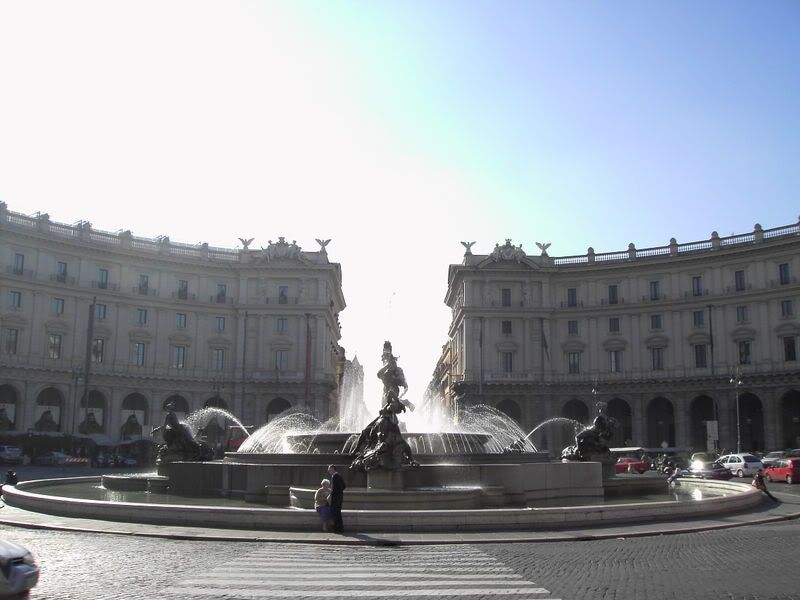
In 1870, Rome became capital city of the new Kingdom of Italy. During this time, neoclassicism, a building style influenced by the architecture of Antiquity, became a predominant influence in Roman architecture. In this period many great palaces in neoclassical styles were built to host ministries, embassies and other governing agencies. One of the best-known symbol of Roman neoclassicism is the Monument of Vittorio Emanuele II or "Altar of Fatherland", where the grave of the Unknown Soldier, that represents the 650,000 Italians that fell in World War I, is located.
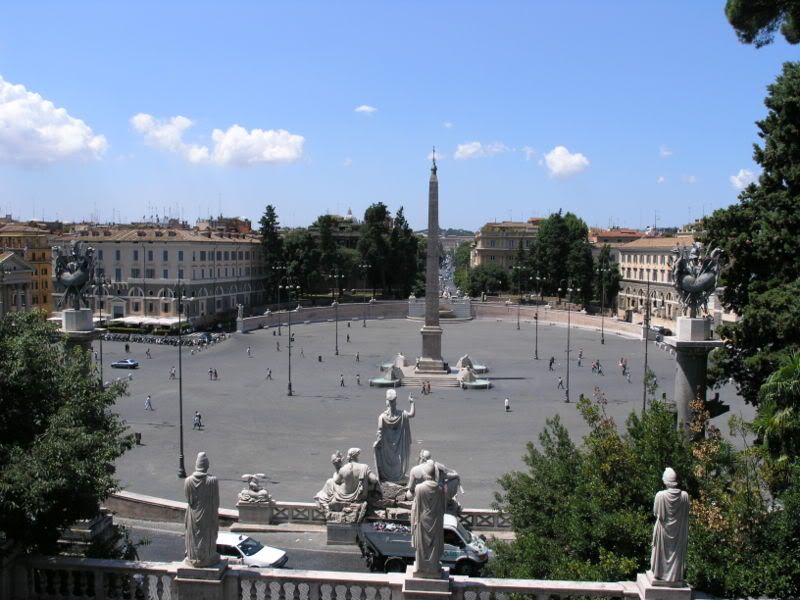
The Fascist regime that ruled in Italy between 1922 and 1943 developed an architectural style which was characterized by its linkages with ancient Rome architecture. The most important fascist site in Rome is the E.U.R. district, built in 1935. It was originally conceived for the 1942 world exhibition, and was called "E.42" ("Esposizione 42"). However, the world exhibition never took place because Italy entered the Second World War in 1940. The most representative building of the Fascist style at E.U.R. is the Palazzo della Civiltà Italiana (1938-1943), the iconic design of which has been labeled the cubic or Square Colosseum. After World War II, the Roman authorities found that they already had the seed of an off-centre business district that other capitals were still planning (London Docklands and La Defense in Paris). Also the Palazzo della Farnesina, the actual seat of Italian Foreign Ministry, was designed in 1935 in fascist style.
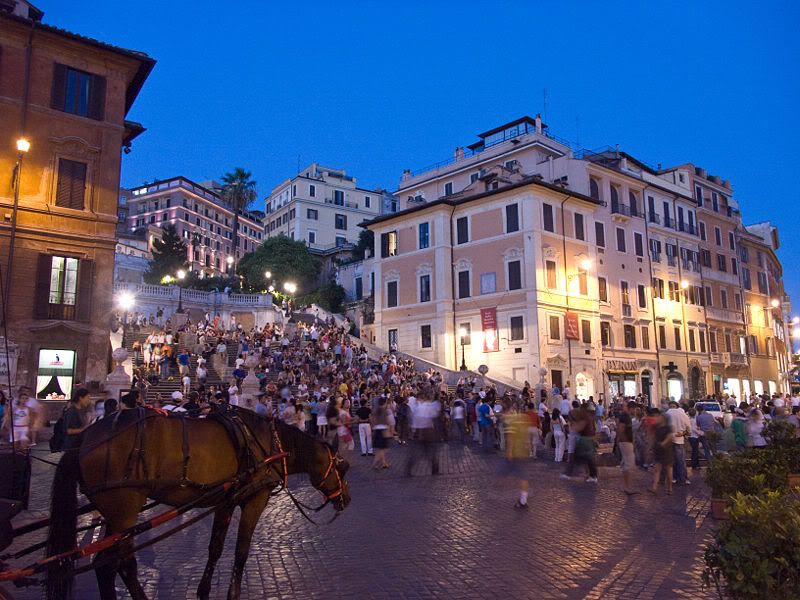
The historical centre ville is dominated by the traditional "Seven hills of Rome": the Capitoline, Palatine, Viminal, Quirinal, Esquiline, Caelian, and Aventine hills. The Tiber flows south through Rome, with the city centre located where the midstream Tiber Island facilitated crossing. Large parts of the ancient city walls remain. The Servian Wall was built twelve years after Gauls' sack of the city in 390 BC; it contained most of the Esquiline and Caelian hills, as well as the whole of the other five. Rome grew out of the Servian Wall, but no more walls were constructed until 270 AD, when Aurelian began building the Aurelian Walls. These were almost twelve miles (19 km) long, and were still the walls the troops of the Kingdom of Italy had to breach to enter the city in 1870.
The old city center contains about 300 hotels and 300 pensioni, over 200 palaces, 900 churches, eight of Rome's major parks, the residence of the President of the Italian Republic, the houses of the Parliament, offices of the city and city government, and many monuments. The old city also contains thousands of workshops, offices, bars, and restaurants. Millions of tourists visit Rome annually, making it one of the most visited cities in the world.
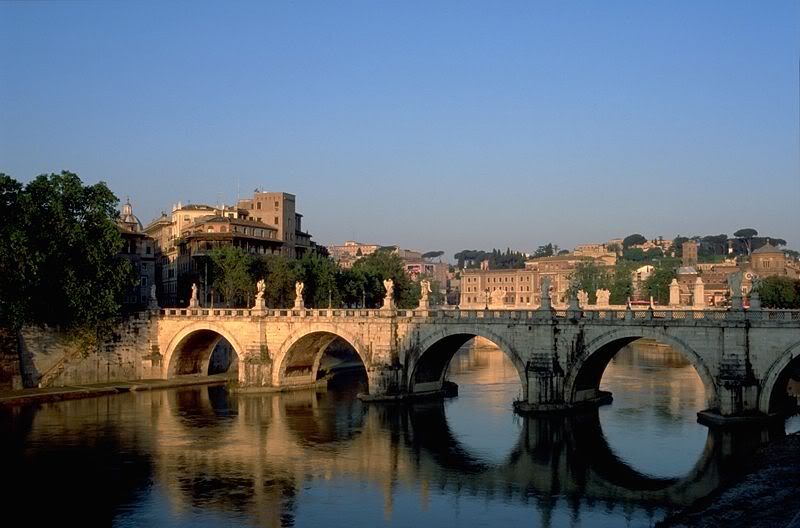
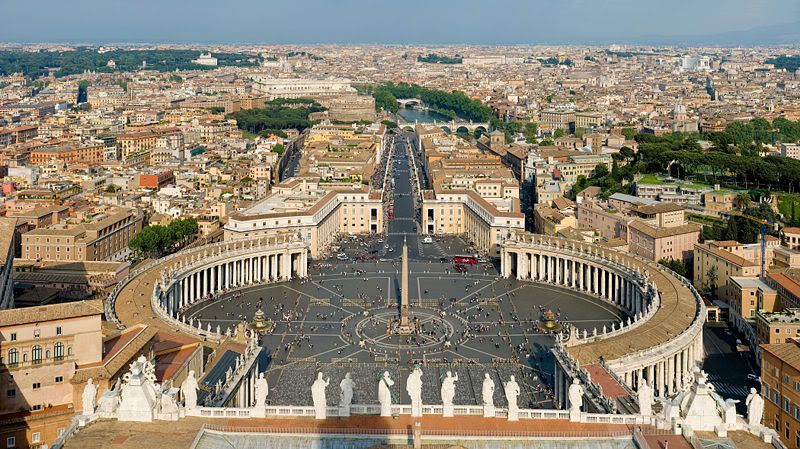
Peripheral layout
The ancient city within the walls covers about four percent of the modern municipality's 1,285 square kilometres (496 sq mi). The historic city center is the smallest of Rome's nineteen administrative zones. The city center is made up of 22 rioni (districts), with one of them, ( Prati), actually lying out of the walled area. Surrounding the center are 35 quartieri urbani (urban sectors), and within the city limits are six large suburbi (suburbs).
The belt highway known as Grande Raccordo Anulare (G.R.A.) describes a huge circle around the capital, about six miles (10 km) out from the city center; unlike most Italian highways, the G.R.A. is toll-free. The circular highway ties together the ancient roads that led to Rome in antiquity: the Via Flaminia, Via Aurelia, Via Salaria, Via Tiburtina, Via Casilina and Via Appia. The modern Via Appia connects the city center to a string of towns known as Castelli Romani.
The Vatican City
The city of Rome surrounds the Vatican City, the enclave of the Holy See, which is a separate sovereign state. It hosts Saint Peter's Square with the Saint Peter's Basilica. The open space before the basilica was redesigned by Gian Lorenzo Bernini, from 1656 to 1667, under the direction of Pope Alexander VII, as a forecourt, designed "so that the greatest number of people could see the Pope give his blessing, either from the middle of the façade of the church or from a window in the Vatican Palace" (Norwich 1975, p. 175). In Vatican City there are also the Vatican Library, Vatican Museums with the Sistine Chapel, the Raphael Rooms and other important works of Leonardo da Vinci, Raphael, Giotto, and Botticelli.
About Rome
Rome (Italian: Roma, Latin: Roma) is the capital city of Italy and of the Lazio region, as well as the country's largest and most populous city, with more than 2.7 million residents. The metropolitan area has a population of about 4 million. It is located in the central-western portion of the Italian peninsula, where the river Aniene joins the Tiber. The Mayor of Rome is Giovanni Alemanno.
The State of the Vatican City, the sovereign territory of the Holy See is an enclave of Rome. It is the smallest country in the world, and the capital of the only religion that has representation in the United Nations (as a non-voting member state).
Rome, Caput mundi (Capital of the world), la Città Eterna (The Eternal City), Limen Apostolorum (Threshold of the Apostles), la città dei sette colli (The city of the seven hills) or simply l'Urbe (The City),[is thoroughly modern and cosmopolitan. As one of the few major European cities that escaped World War II relatively unscathed, central Rome remains essentially Renaissance and Baroque in character. The Historic Center of Rome is listed by UNESCO as a World Heritage Site.
Rome is in the Lazio region of Central Italy at the confluence of the Aniene and Tiber (Italian: Tevere) rivers. Although the city center is about 24 kilometers inland from the Tyrrhenian Sea, the city territory extends to the very shore, where the south-western Ostia district is located. The altitude of the central part of Rome ranges from 13 m (43 ft) above sea level (in Piazza del Popolo) to 120 m (394 ft) above sea level (the peak of Monte Mario).
Rome enjoys a typical Mediterranean climate which characterizes the Mediterranean coasts of Italy. It is at its most comfortable from April through June, and from mid-September to October; in particular, the Roman ottobrate (ottobrata can roughly be translated as "beautiful October day") are famously known as sunny and warm days. By August, the temperature during the heat of the day often exceeds 32 °C (90 °F); traditionally, many businesses would close during August, and Romans would abandon the city for holiday resorts, but this trend is weakening, and the city is increasingly remaining fully functional during the whole summer, in response to growing tourism as well as change in the population's work habits. The average high temperature in December is about 13 °C (57 °F), but below zero lows are not uncommon.
rome had been the center of everything since the ancient times, one of the finest city in southern europe, i honestly dreaming to go there in able to see the ancient coliseum, where the gladiator had been held billion years ago, rome had been the center of everything during mussolini's reign and the axis in world war II.
I wish i could go there, rome is one of my favorite Places on earth.
they got the friendly neighborhood, delicious foods and terrific landmarks.


No comments:
Post a Comment